Table of Contents
ToggleIntroduction:
Compound Exercise at Home has gained basic universality. These exercises are an underpinning of strong home activities, enabling individuals to capably zero in on different muscle packs with irrelevant equipment or even their body weight. By integrating compound activities into their wellness schedules, people can accomplish strength, muscle development, and by and large wellness from the solace of their own homes.
In this aid, we will investigate the strategies and advantages of compound activities that can be performed without the requirement for an exercise center enrollment or costly hardware, enabling you to accomplish your wellness objectives helpfully and reasonably.
The Importance of Compound Exercise at Home
Proficient Utilization of Time: Compound activities connect with numerous muscle bunches all the while, permitting you to deal with different body parts in a solitary development. This proficiency is particularly significant when time or space is restricted in a home exercise setting.
Full-Body Commitment: Compound activities give a more complete exercise by focusing on significant muscle gatherings, which can assist with muscle improvement, practical strength, and calorie consumption.
Useful Strength: These activities impersonate genuine developments, improving your capacity to perform day-to-day exercises easily. This utilitarian strength is essential for keeping up with general wellness and autonomy.
Adaptability: Compound activities can be adjusted to various wellness levels by changing weight or power, making them reasonable for amateurs and experienced competitors the same.
Insignificant Gear: Many compound activities should be possible with negligible or no hardware, making them available for home exercises.
Equilibrium and Coordination: These activities require equilibrium and coordination, prompting further developed dependability and decreased chance of injury.
8 Best Compound Exercise at Home
Squat press
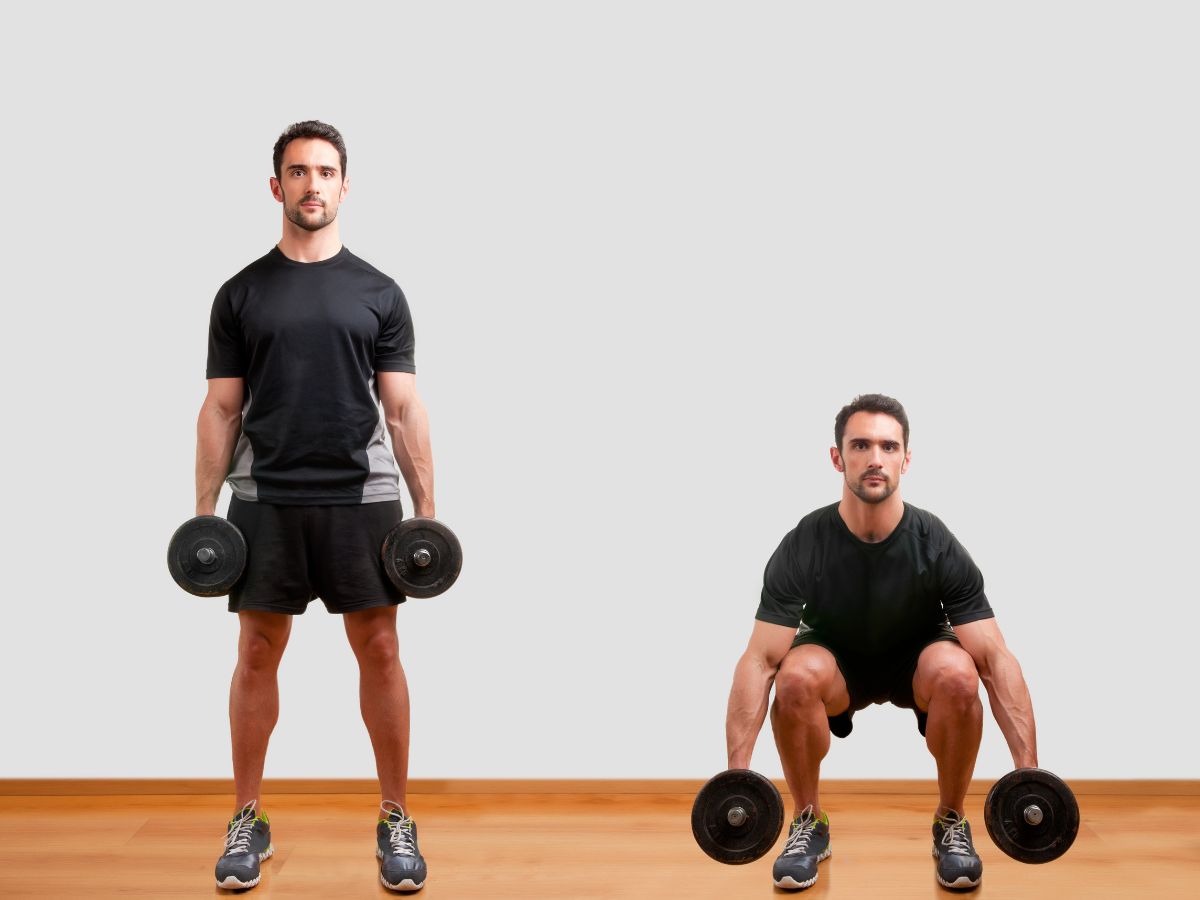
The Squat Press is an unbelievable strength-preparing full-body exercise that adds to creating strength in your legs, lower back, hips, stomach area, arms, and shoulders. Squats are probably the most valuable strength-preparing exercises one can perform, as they empower a huge measure of muscle development. Assuming you match up the ordinary squats with shoulder squeezes, you wind up delivering a muscle exercise that forms both your lower and chest area simultaneously.
The squat press includes lifting either a couple of free weights, or a solitary dumbbell, from the level of the shoulders, and afterward squeezing it up over the head till your elbows are completely locked. While you are playing out this development, ensure that your back is kept straight instead of adjusted. The most ideal way to portray it is to push your chest out on your way up. On your way down, bring down the dumbbell to bear level, and afterward play out an entire 90-degree squat, driving the hand weight to the floor as you incline somewhat forward to keep your equilibrium.
Squat-curl-press
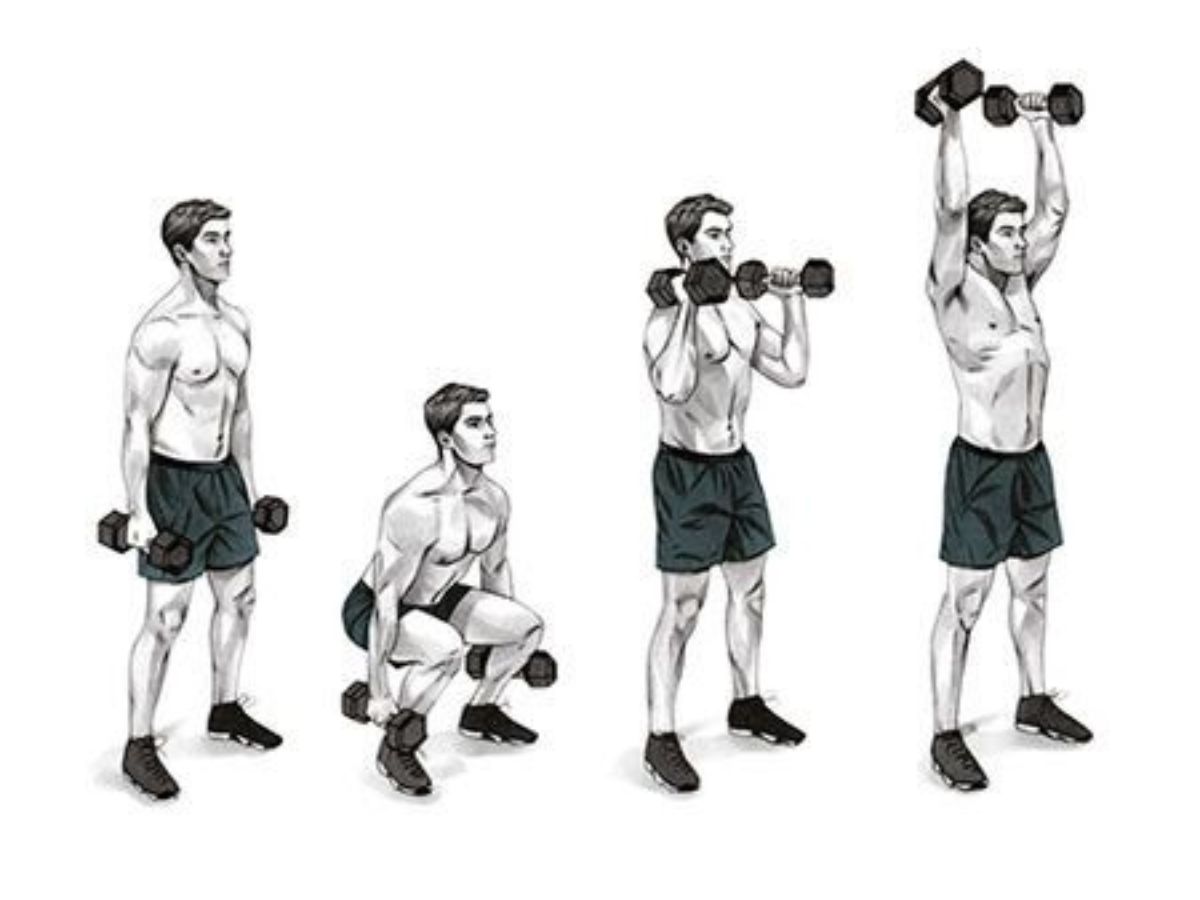
The squat, curl, and press is a notable compound activity that works the legs, center, arms, and shoulders in a single unique development. This is a high-level activity that requires actual strength and soundness. Begin with lighter weights as you practice this development design prior to attempting heavier weights.
Stand with your feet only more extensive than your hips, and hold light to medium loads with your arms by your sides and palms confronting one another. Squat down touch the loads to the floor and turn your palms to look ahead. Keep your back straight and your abs pulled in and engaged.
Side squat
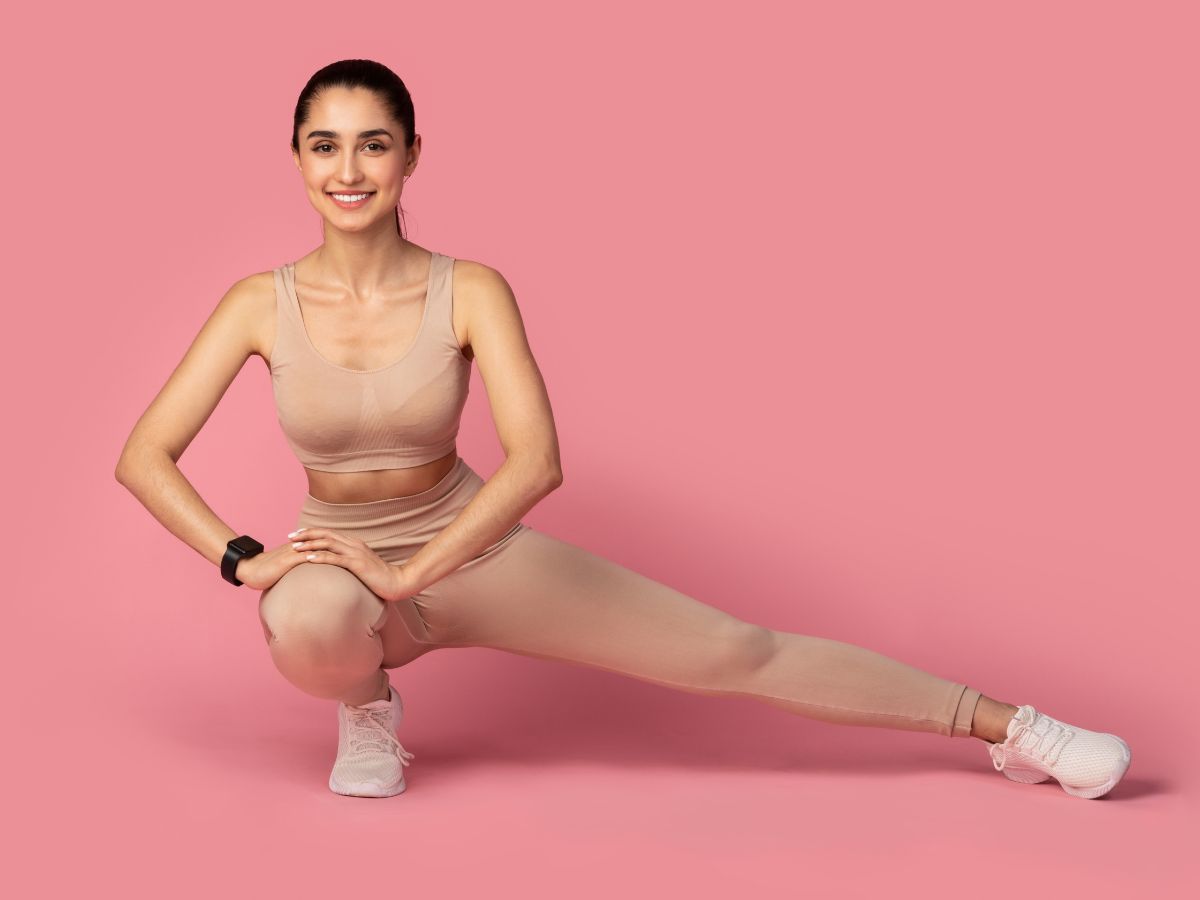
Side squats are an activity that builds up the legs, glutes, and outside thighs for strong, carved legs and a fit, molded lower body. Squats resemble the failed-to-remember cousin, everything being equal. Frequently neglected for the more conventional essential squat or different adaptations, assuming you figure out how to do side squats you are figuring out how to add parallel development and additional solidarity to your external and internal thighs.
It’s implied that squats are an astonishing exercise for the legs. Each mentor and wellness proficient around will recommend squats for leg strength as well concerning calorie consumption, since working your bigger muscle bunches consumes more calories. Learning the essential squat is your most memorable objective on this front, however, when you have the rudiments, it is critical to stir up your exercises and add aspects to the moves. There are various sorts of squats, each including an alternate contort of the strength it gives. Side squats have several things that are special.
Push up

The press-up or the push-up practice is an extremely famous activity utilized in furthest point preparation. It is a shut dynamic chain practice that requires no devices and utilizations the body weight for obstruction. It has numerous varieties, so it very well may be changed by the wellness level. They work the back arm muscles, pectoral muscles, and shoulders. Utilizing appropriate structure, they can likewise fortify the lower back and center by drawing in (pulling in) the stomach muscles. Push-ups are a quick and successful activity for developing fortitude.
plank

The plank is quite possibly one of the most well-known exercises in the rec center, a very straightforward static hold that shows up in practically every stomach muscle-preparing program you’re probably going to experience. Almost everybody can get down on the floor, stretch themselves out, and hold set up, so the move is a #1 for novices. It’s not difficult to step up for specialists by including development or a heap your back. Furthermore, you’re not simply preparing your abs — your entire center, which incorporates the glutes and lower back, as well — are completely locked in.
However, there’s more that goes into the plank, if you need to take full advantage of the exercise. The way into your center preparation is in keeping up with wonderful structure and discipline — which may be undeniably harder than you anticipate.
Walking knee lunge
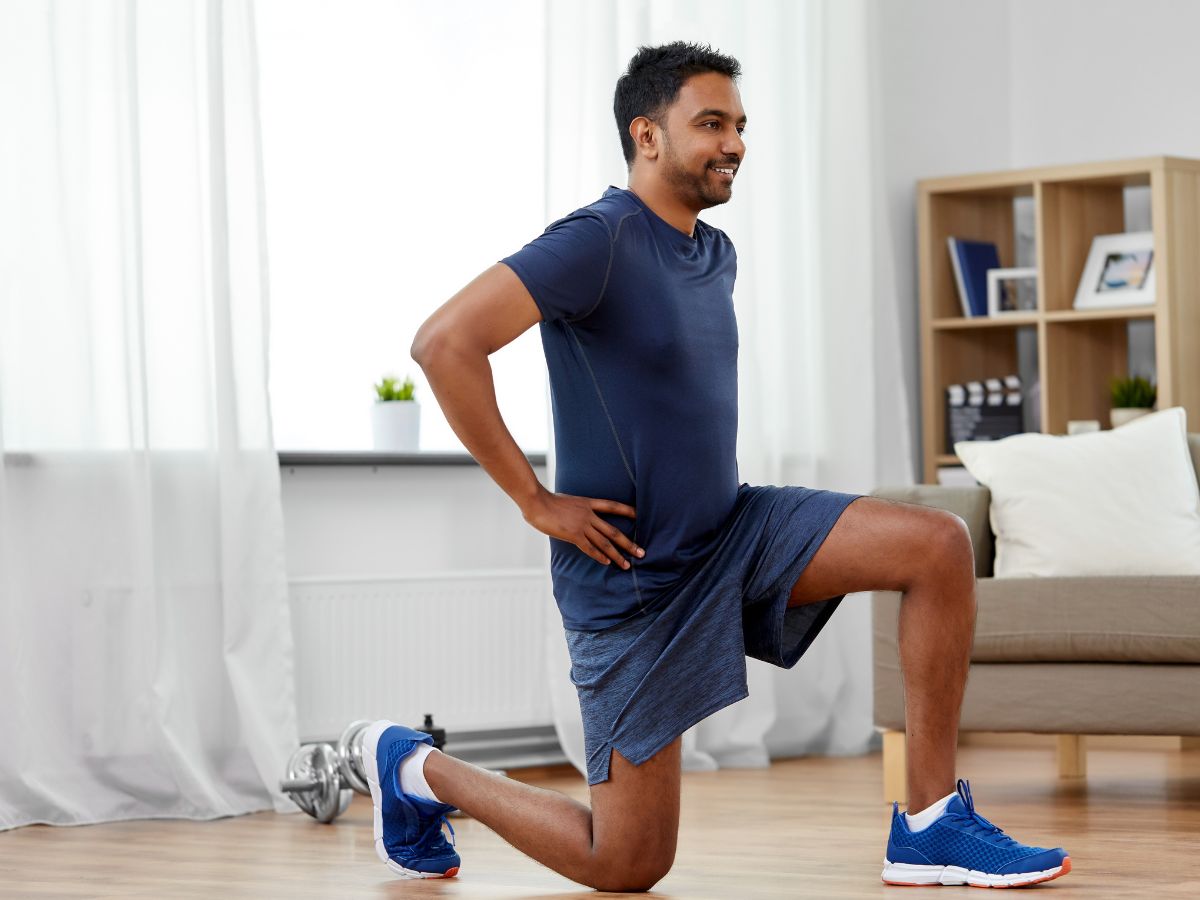
Walking lunges are a minor departure from the static rush exercise. Rather than remaining back upstanding subsequent to playing out a jump on one leg, as you would in a static bodyweight rush, you “walk” forward by lurching out with the other leg. The development goes on for a set number of reps.
Walking lunges fortify the leg muscles as well as the center, hips, and glutes. You can likewise make strolling thrusts more testing by adding loads or doing a mobile lurch with a middle curve.
Rear lunge
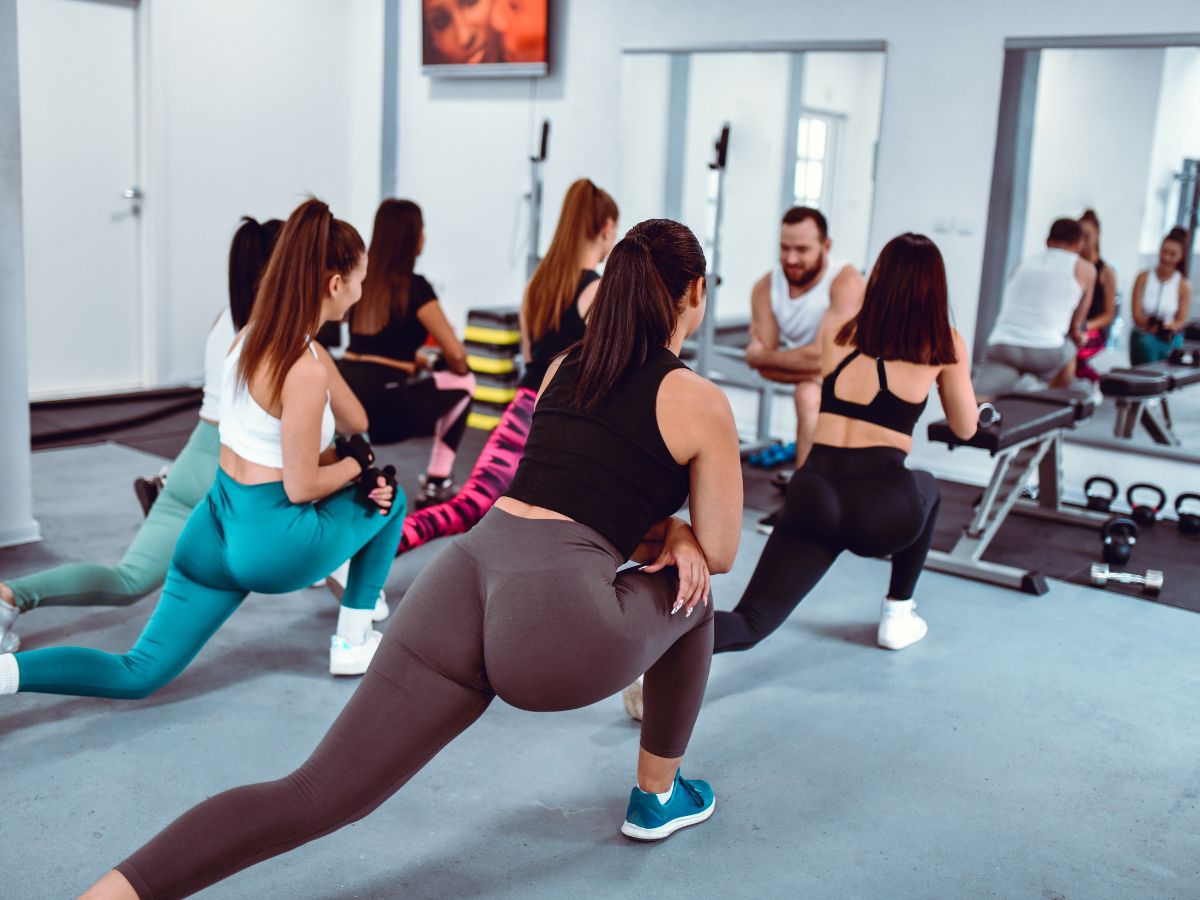
The rear lunge is a lower body practice that essentially focuses on the quadriceps, hamstrings, and glutes. To play out a back rush, begin by remaining with your feet hip-width separated. Make a stride back with one leg, bringing down your body until the two knees are bowed at a 90-degree point. Your front knee ought to be lined up with your lower leg, and your back knee ought to float simply over the ground. Keep your chest upstanding and your center drew in for security. Press through your front heel as you return to the beginning position. Rehash on the other leg. This exercise further develops leg strength, equilibrium, and soundness while likewise captivating the center muscles.
Burpees
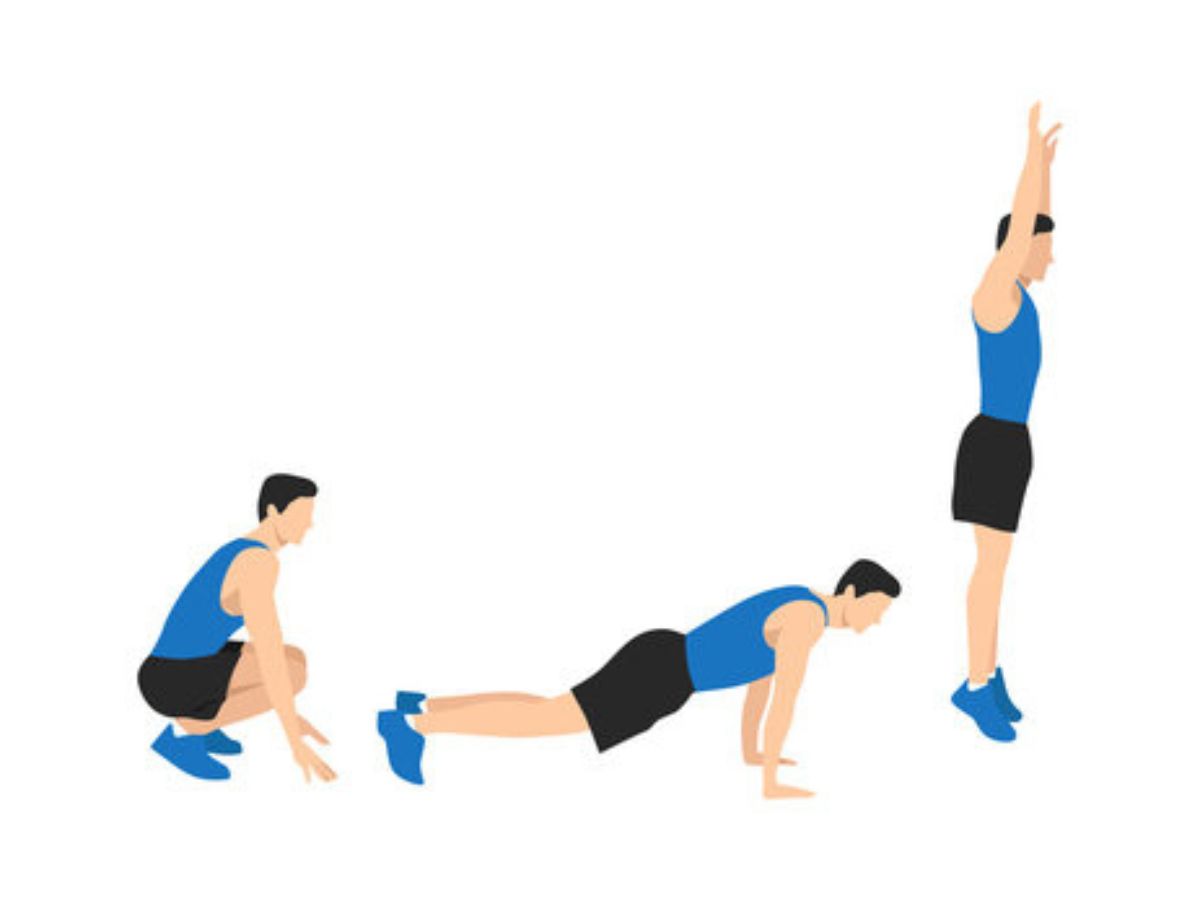
Burpees have gained notoriety which is as it should be. They’re quite possibly one of the best testing exercises out there, and they’re certain to evoke moans from wellness novices and experts the same. Be that as it may, what precisely is a burpee and how would you isn’t that right? There are various varieties, however, they all follow a comparative example — and having legitimate structure is critical to getting every one of those muscle-reinforcing benefits.
The burpee is basically a blend of a squat push and a squat leap — and at times, a push-up. Some wellness geniuses mentor burpees with a push-up or a prompt to drop your body the entire way to the ground, though different coaches mentor burpees with simply a leap back to a board.
The Technique of Compound Exercise at Home
Bodyweight Squats:
- Stand with your feet shoulder-width separated.
- Bring down your body by bowing your knees and pushing your hips back, keeping your back straight.
- Go as low as your adaptability permits, in a perfect world until your thighs are lined up with the ground.
- Push through your heels to remain back up.
Push-Ups:
- Begin in a board position with your hands set marginally more extensive than shoulder-width separated.
- Push back up to the beginning position.
- Plunges (utilizing equal bars or durable furnishings):
- Put your hands on equal bars or the edges of two durable seats.
- Push back up to the beginning position.
Boards:
- Lie face down with your lower arms on the ground and your elbows straightforwardly underneath your shoulders.
- Lift your body off the ground, making a straight line from head to heels.
Jumps:
- Stand with your feet together.
- Drive over the front leg to get back to the beginning position.
- Rehash with the other leg.
Burpees:
- Begin in a standing position.
- Drop into a squat position and put your hands on the floor.
- Detonate up from the squat and hop as high as possible.
Pull-Ups :
- Swing from a draw-up bar with your palms confronting away from your body.
- Lower your body down.
Conclusion :
As may be obvious, there are various compound exercise at home you can do from home. Compound exercises are vital in building muscle. This is on the grounds that they use more than each muscle bunch in turn. At the point when you attempt to simply target individual muscle gatherings, you’ll find that you can do a great deal of reiterations before really starting to perspire. Compound exercise at home requires more exertion and powers more muscles to work all the while – which prompts added force and consumes additional calories. Here are a few compound exercises you can do from home; in addition, they are free, tomfoolery, and enacting and they will likewise assist with developing your perseverance.
FAQ:
Can I do the 5 compound exercises every day?
In the event that you’re a solid grown-up, you ought to have the option to perform compound exercises a few days every week: Spotlight on various muscle bunches every day securely. Stand by somewhere around 48 hours between strength instructional meetings to permit muscles to rest.
Are 3 compound exercises enough?
Three to four activities can be sufficient to cover a full-body exercise at the transitional level, yet it obviously relies upon your inclinations and the sort of developments that you are doing. Assuming you pick the right three or four activities, you can get that optimal equilibrium of 80:20 compound versus
Is it OK to do only compound exercises?
Would it be a good idea for you to Zero in Basically on Intensify Activities? The short response is yes. Despite the fact that it relies upon the objectives of the client, compound exercises produce strength, power, and muscle gains. They increment testosterone and development chemical, which is liable for building muscle and consuming fat.
Read More :